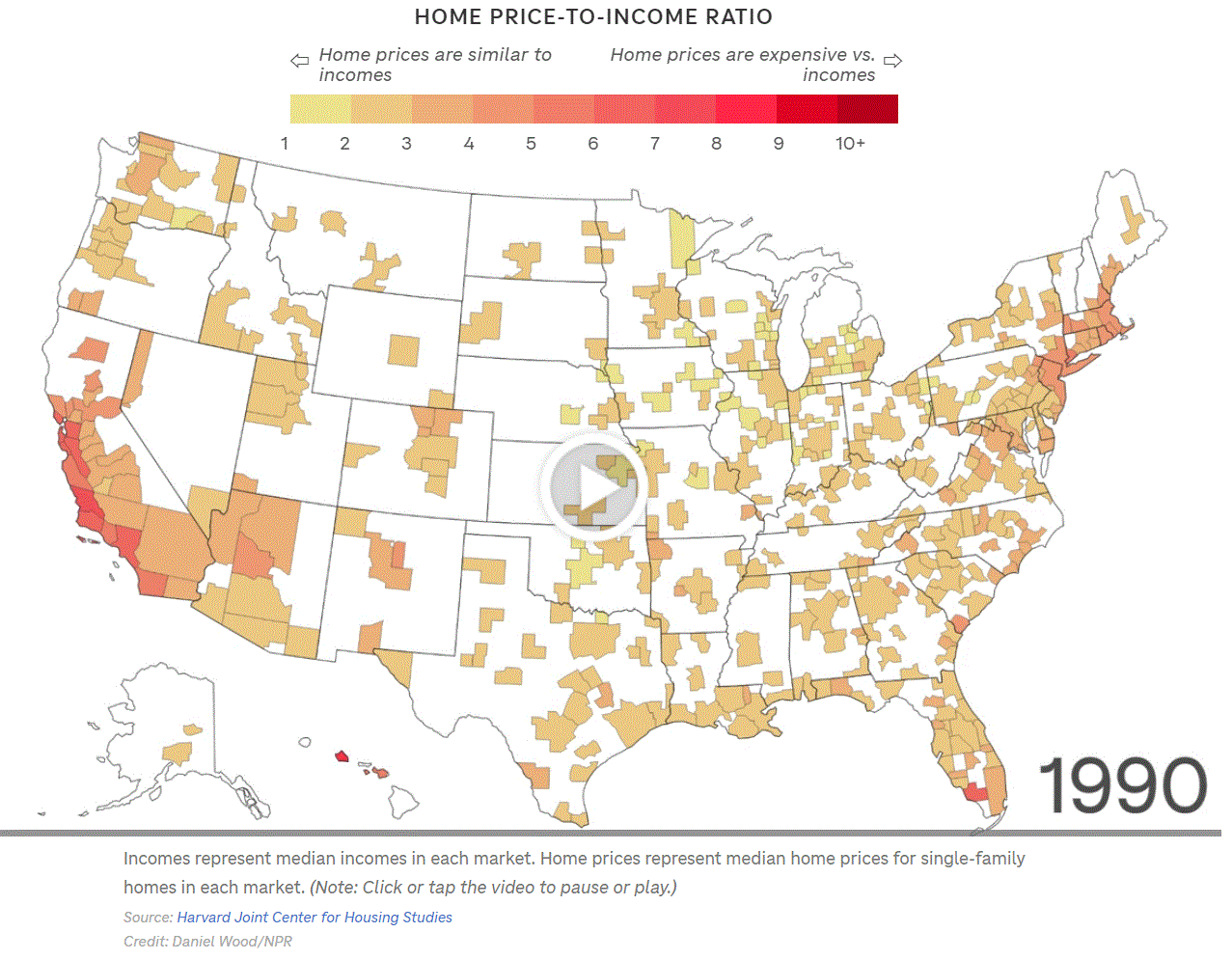
June 20, 2024 - NPR
By Jennifer Ludden, Daniel Wood
Millions of Americans are already shut out of buying a home, and the cost of buying one continues to rise.
In past decades, it was common to find a house that cost roughly three times a buyer's annual income. But that ratio has skewed sharply since the COVID-19 pandemic, with home prices up a whopping 47% since early 2020. Median home sales prices last year were about five times the median household income, according to tabulations in a newly released report by the Harvard Joint Center for Housing Studies, and there are signs it could get worse.
The double whammy of high prices and high mortgage rates has "left homeownership out of reach to all but the most advantaged households," says Daniel McCue, a senior research associate at the center.
The report finds that in nearly half of metro areas, buyers must make more than $100,000 to afford a median-priced home; in 2021, that was the case in only 11% of markets.
Enter your city below to see how the gap between incomes and home prices has changed where you live.
For those looking to buy — as well as for current homeowners — rising property taxes and insurance rates are also adding to financial strain. According to Harvard's estimates, "The all-in monthly costs of the median-priced home in the U.S. [when adjusted for inflation] are the highest since these data were first collected more than 30 years ago."
This has made it even harder to close racial gaps in homeownership. In the first quarter of 2024, the report finds that just 8% of Black renters and 13% of Hispanic renters had enough income to afford the monthly payments on a median-priced home.
Meanwhile, with many homeowners reluctant to sell and give up their lower mortgage rates, home sales have plummeted. Last year saw the lowest level of existing-home sales in nearly three decades, even lower than after the 2008 housing crash. The U.S. homeownership rate nudged up just 0.1 percentage points last year, the smallest increase since 2016.
The spike in home costs has left millions of people stuck renting, driving up competition and prices in that market too. For a record half of U.S. renters, their housing is now unaffordable, Harvard finds. Since 2001, inflation-adjusted rents have gone up 10 times faster than renters' income.
Housing experts say the underlying problem for both buyers and renters is a massive housing shortage that has built up over decades and will take years to remedy. Single-family construction has been picking up, and some developers are building slightly smaller, lower-cost homes. A boom in multifamily construction has also helped ease rents, especially in places such as Austin, Texas, which saw some of the biggest hikes in recent years.
But the Harvard report's authors say this reprieve isn't likely to last.
For one thing, high interest rates and other rising costs — land, labor, insurance — have again slowed down apartment construction. And because all those things are so expensive, most of what's being built is at the higher end of the market. Over the past decade, the U.S. has lost more than 6 million units with rents under $1,000. For extremely low-income renters, the National Low Income Housing Coalition calculates that for every 100 households, there are only 34 places they can afford.
At the same time, rental demand remains strong, especially as more members of Generation Z move out on their own. Last year, the number of renter households grew by more than half a million, the biggest bump since 2016.
If demand continues to tick up while the slowdown in construction persists, the Harvard report warns that this will "risk sparking another period of rapid rent increases similar to the recent run-up that has contributed to the worst renter affordability conditions on record."